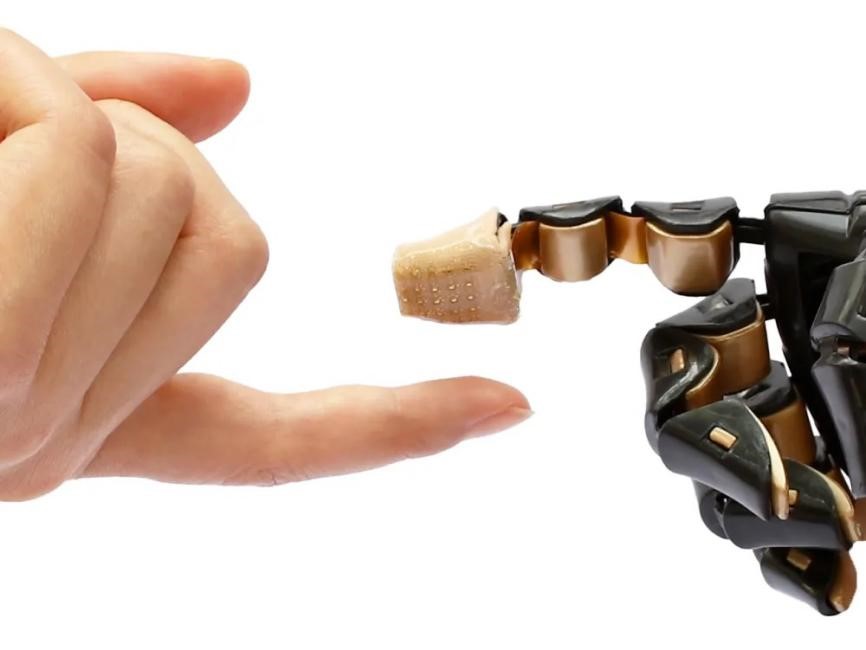At the intersection of artificial intelligence and machine perception, an innovative achievement of Professor Zhang Yihui's research team at the School of Aeronautics and Astronautics and the Flexible Electronics Technology Laboratory of Tsinghua University marks a new era of human-machine interaction - the advent of the world's first bionic 3D electronic skin. This breakthrough is not only epoch-making in technology, but also triggers deep thinking at multiple levels of ethics, medicine and society.
The core highlights of technological innovation
This new electronic skin, with its unique bionic three-dimensional architecture, realizes the simultaneous decoding and perception of three mechanical signals: pressure, friction and strain. According to the research team, its perception resolution of pressure position is about 0.1 mm, which is close to real skin. This accuracy is the first in the field of electronic skin.

Figure 1: The first close contact with AI is about to be realized
Intelligent fusion of deep learning algorithms
Combined with deep machine learning algorithms, the electronic skin can simultaneously measure the modulus and local principal curvature of an object by touch, which shows great potential in quantitative measurement of physical quantities and human-computer interaction. For example, in the application test of judging the freshness of food, the electronic skin showed higher accuracy and sensitivity than traditional sensors.
Application prospects and market potential
The application prospects of electronic skin are broad. From precise surgical assistance of medical robots to daily health monitoring, from tactile feedback of smart prostheses to the natural experience of human-computer interaction, this product is expected to play an important role. According to market research institutions, with the maturity of technology and the expansion of applications, the market size of electronic skin and related products will show exponential growth in the next decade.

Figure 2: Tsinghua University develops the world's first bionic 3D electronic skin
Challenges and social impact
Although electronic skin technology has made significant progress, it still needs to overcome technical challenges such as cost, stability, and biocompatibility before large-scale commercial application. At the same time, the problems it may cause in terms of privacy protection, ethics, etc. cannot be ignored. For example, how to ensure the security and privacy of electronic skin when collecting personal health data is an urgent problem to be solved.
Summary
The world's first bionic 3D electronic skin developed by Tsinghua University is not only a major breakthrough in the field of AI and machine perception, but also the beginning of close contact between humans and machines. With the continuous advancement of technology and in-depth exploration of application scenarios, we expect electronic skin to play an important role in many fields such as medical care, health monitoring, and human-computer interaction. At the same time, it also requires the joint efforts of all sectors of society to ensure the healthy development and rational application of this technology.






